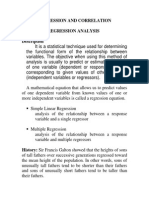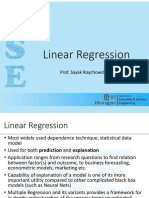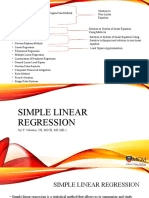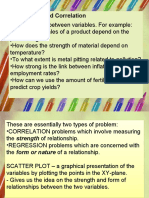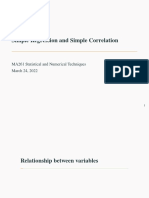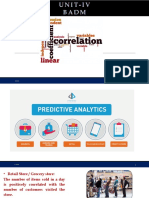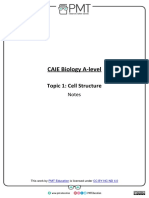0% found this document useful (0 votes)
9 views41 pagesLecture Week 9 - Regression
The document discusses various predictive analytic techniques, focusing on regression analysis, including simple linear regression, multiple linear regression, and logistic regression. It highlights the importance of model adequacy, including the significance of regression coefficients, the coefficient of determination (R²), and the need for residual analysis to ensure the model's assumptions are met. Additionally, it addresses multicollinearity and methods for assessing model performance through metrics like PRESS and adjusted R².
Uploaded by
Layan MahasnehCopyright
© © All Rights Reserved
We take content rights seriously. If you suspect this is your content, claim it here.
Available Formats
Download as PPTX, PDF, TXT or read online on Scribd
0% found this document useful (0 votes)
9 views41 pagesLecture Week 9 - Regression
The document discusses various predictive analytic techniques, focusing on regression analysis, including simple linear regression, multiple linear regression, and logistic regression. It highlights the importance of model adequacy, including the significance of regression coefficients, the coefficient of determination (R²), and the need for residual analysis to ensure the model's assumptions are met. Additionally, it addresses multicollinearity and methods for assessing model performance through metrics like PRESS and adjusted R².
Uploaded by
Layan MahasnehCopyright
© © All Rights Reserved
We take content rights seriously. If you suspect this is your content, claim it here.
Available Formats
Download as PPTX, PDF, TXT or read online on Scribd
/ 41




